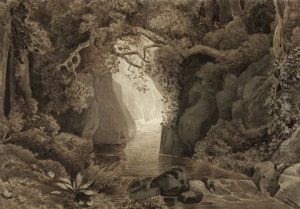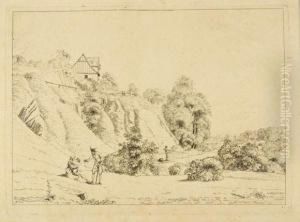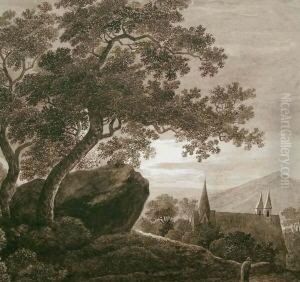Christoph Nathe Paintings
Christoph Nathe was a German painter and engraver, known for his portraits and landscape paintings. Born on December 13, 1753, in Kamenz, Saxony, he was part of the late 18th-century European art movement that focused on the detailed depiction of nature and individuals. Nathe's upbringing in the picturesque region of Saxony greatly influenced his artistic direction, drawing him towards landscapes and the natural world as his primary subjects.
Nathe's education in art began in his early years, and he quickly showed a talent for capturing the essence of his subjects. His skills were honed through studies at various art academies, including the renowned Dresden Academy of Fine Arts. Here, Nathe immersed himself in studying the works of the Old Masters, which significantly influenced his approach to painting and engraving.
Throughout his career, Christoph Nathe developed a distinctive style that blended realism with a sense of romanticism. His landscapes often depicted the German countryside, filled with detailed representations of trees, hills, and rivers, reflecting a deep appreciation for nature's beauty. Nathe's portraits, on the other hand, captured the personality and essence of his subjects with remarkable sensitivity and attention to detail.
Despite his talent and contribution to German art, Christoph Nathe remained relatively obscure during his lifetime. He worked mainly on commission for local patrons and did not gain the widespread recognition that some of his contemporaries enjoyed. However, his works have since been appreciated for their technical skill and emotional depth, earning Nathe a place in the history of German art.
Christoph Nathe died on September 3, 1806, in his hometown of Kamenz. His legacy lives on through his artworks, which continue to be studied and admired for their contribution to the development of landscape and portrait painting in Germany. Nathe's work is a testament to the rich artistic traditions of the late 18th century, capturing the beauty of the natural world and the complexity of the human condition with equal finesse.


















